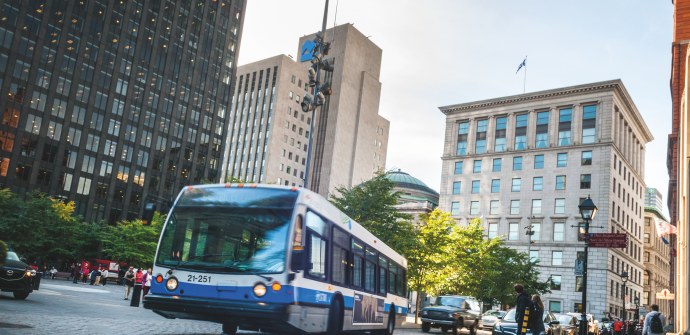Aware of the complex situations experienced by its field personnel, the STM is already taking action in a variety of ways and works with its drivers to fine-tune bus route planning on an ongoing basis.
Montréal, June 15, 2018 – Improving transit users’ experience is central to the STM’s 2025 Strategic Organizational Plan (SOP 2025), and the bus network is a key priority. In this context, the STM met the media today to give a technical presentation on how it organizes its drivers’ work and plans schedules and travel times for its bus network.
The STM is aware of the complex situations experienced by its field personnel. It is already taking action in a variety of ways and works with its drivers to fine-tune bus route planning on an ongoing basis.
Work already well under way
Contrary to certain information circulating in connection with negotiations with the drivers’ union, the STM has already implemented a number of measures designed to optimize schedules and travel times, with a view to promoting the punctuality of the bus network and improving the quality of customer service.
According to Luc Tremblay, chief executive officer of the STM, “We’re aware of situations and take action. Year after year, we improve travel time and end-of-line downtime in order to enhance the regularity of our service based on the available resources. For 2017 alone, we dedicated $4.5 million to additional time. Our planning department works with the drivers at the bus garages to validate proposed schedules, see how they work in real life and adjust them based on observations. Deployment of these new efforts shows we have things under control.”
No single solution
“Adding travel time isn’t a blanket solution. We’re working on the issue, but other solutions have to be implemented. Some of them are part of our SOP 2025, such as the historic redesign of our bus network, but others depend on negotiation of the collective agreement of our drivers’ union, currently under way, with a view to allowing greater operational flexibility,” said Luc Tremblay.
He gave the example of a driver waiting at a bus garage who cannot be moved to another garage with a personnel shortage, to help his or her co-workers, because the move is prevented by the collective agreement. “It’s also the type of situation that creates pressure on service in certain places. It’s all a matter of balance, and the goal is to have greater flexibility so we can balance needs and resources in order to deliver the promised service to users.”
A complex, evolving network
The STM bus network has 221 lines in both directions, with an average of 15 different travel times per day and per line. All of this requires painstaking planning, with nothing left to chance. This mechanism operates continuously. The STM takes into account transit users’ needs, operational needs, its budget, available vehicles and driver assignments — all of this with an ever-changing road system where work is under way at thousands of locations.
Technical presentation
- 30 -
Informations :
medias@stm.info
